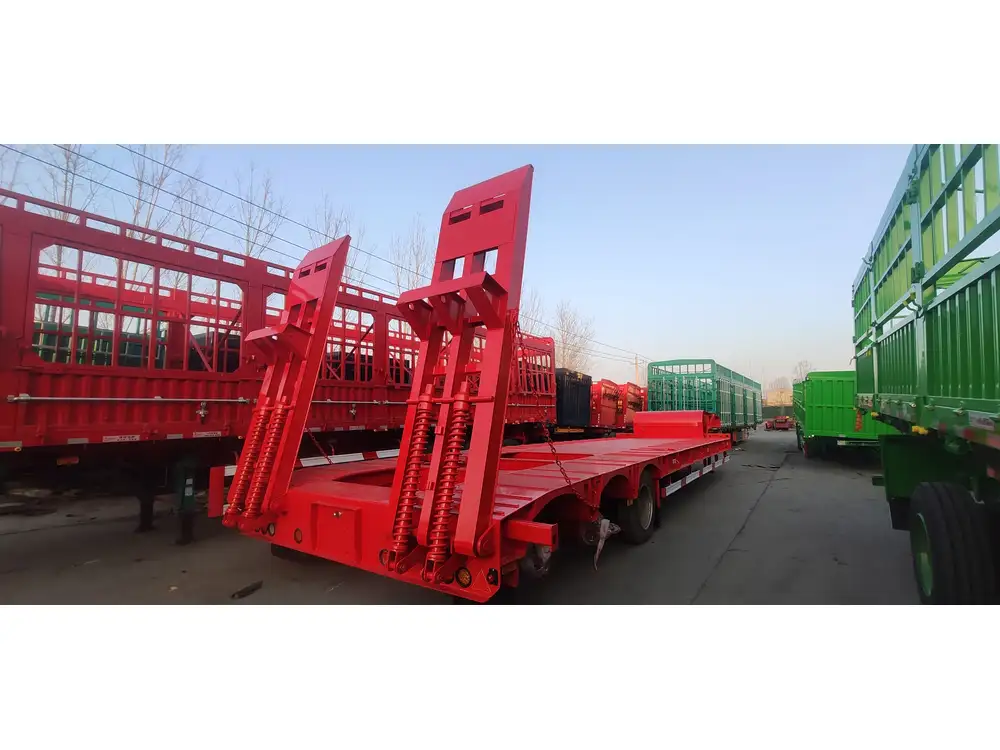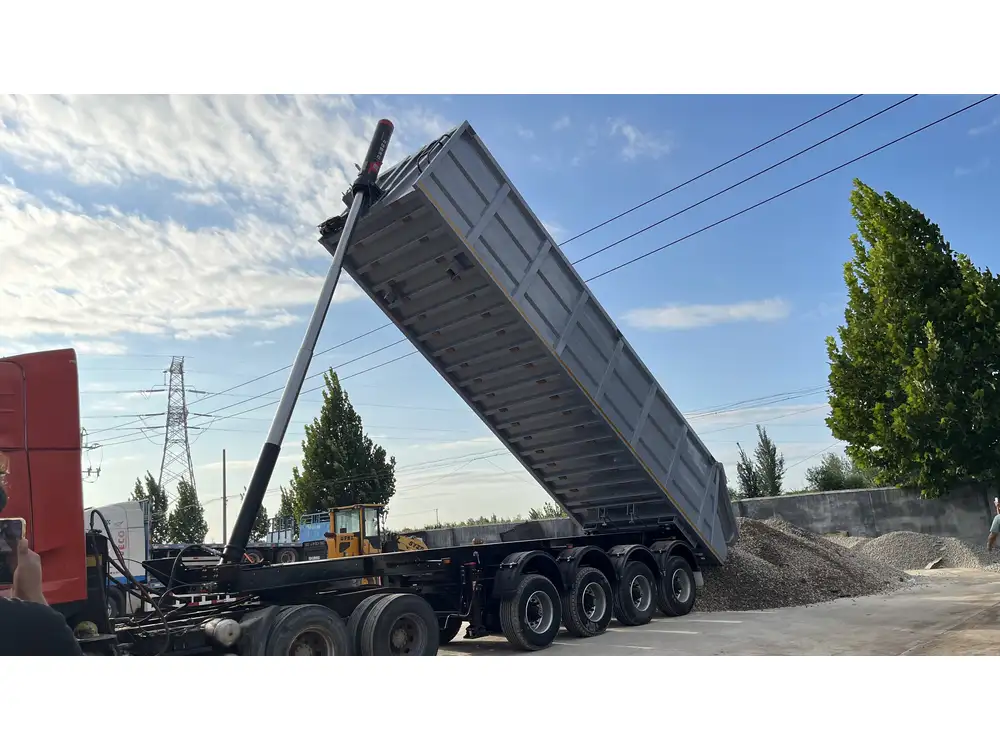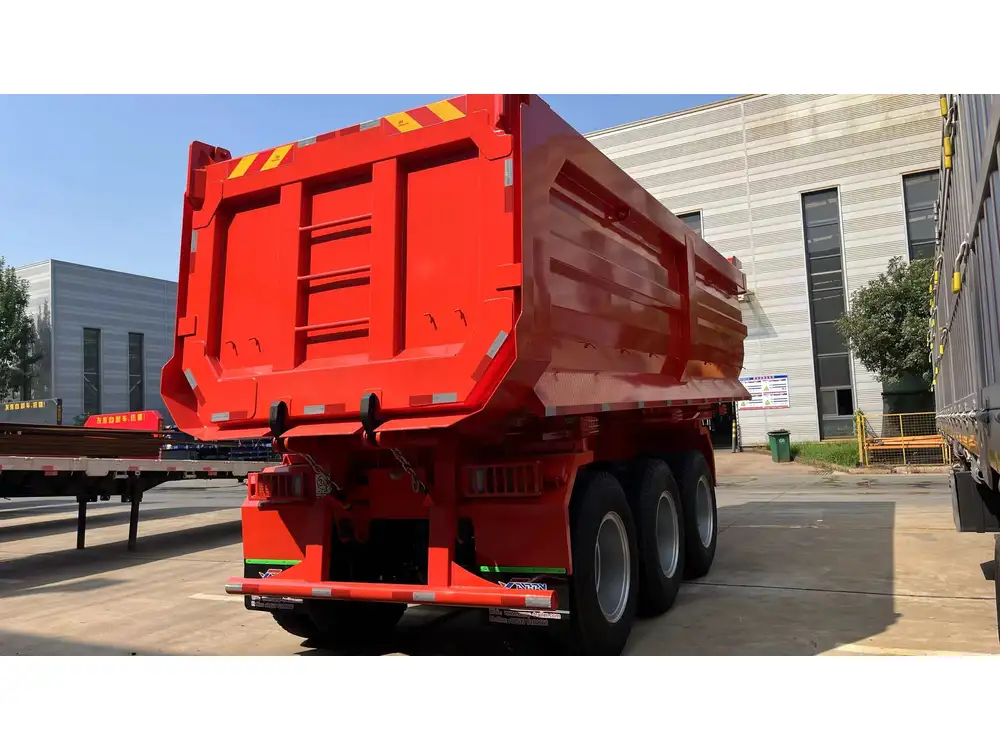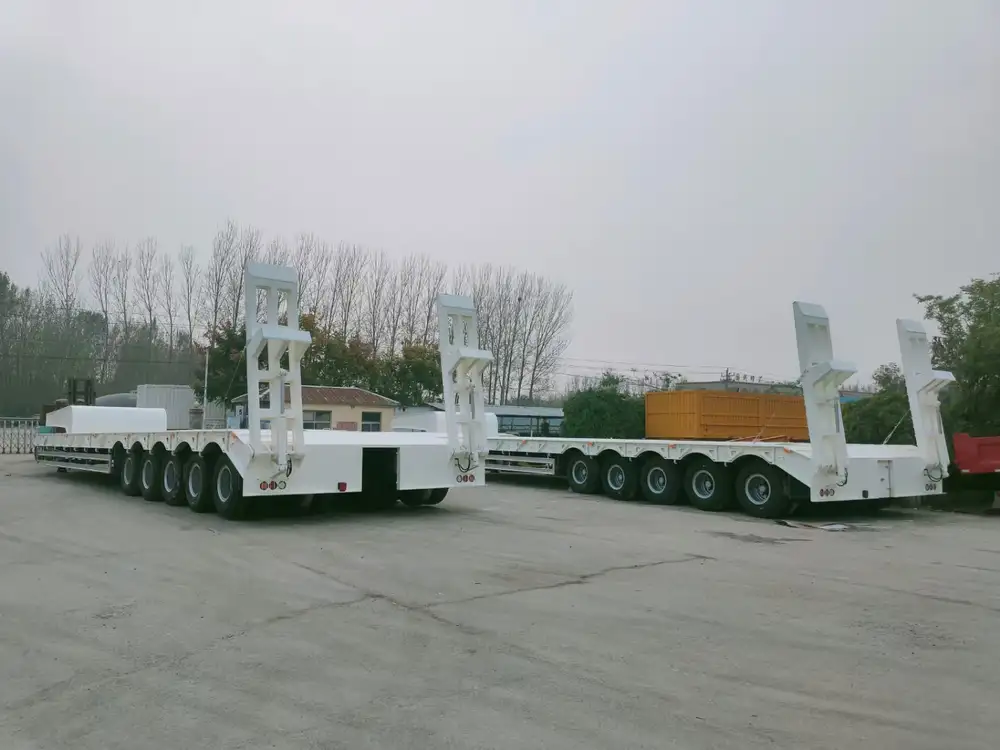When it comes to transportation logistics, the dry van semi-trailer stands as a cornerstone, optimizing both efficiency and capacity. However, one crucial aspect that often surfaces in discussions about these trailers is their height. To address your curiosity comprehensively, let’s delve into various nuances surrounding the height of dry van semi-trailers, from standard measurements to important considerations for loading and regulations.
Standard Height of a Dry Van Semi-Trailer
A dry van semi-trailer typically rises to a height of 13 feet 6 inches (4.1 meters). This measurement includes the trailer and any standard cargo that may be loaded onto it. Understanding this standard height is vital for several reasons:
Road Regulations: Different states and counties may impose restrictions on vehicle heights, necessitating knowledge of the trailer’s height to avoid fines and penalties.
Loading Considerations: The standard height impacts loading strategies at warehouses, docks, and during transit, affecting overall logistics planning.
Compatibility with Equipment: Ensuring that the semi-trailer height is compatible with loading yards and bays is paramount for an efficient operation.
| Aspect | Measurement |
|---|---|
| Standard Height | 13′ 6″ (4.1 meters) |
| Typical Length | 28′, 40′, 48′, 53′ |
| Width | 8′ 6″ (2.6 meters) |
Variability in Height: Factors Impacting Dry Van Semi-Trailer Dimensions
While the standard height is widely recognized, various factors influence the actual height of a dry van semi-trailer. Understanding these factors is essential for those in the logistics and transportation industry.

1. Model Variations
Different manufacturers provide variations in trailer height, with some specialized models exceeding the standard due to enhanced features. Advanced designs may incorporate aerodynamic enhancements that could marginally alter standard dimensions.
2. Suspension Types
The type of suspension system employed can play a significant role in the height of the trailer. For example:
- Low-bed Trailers: Typically have a lower height to accommodate heavier loads without exceeding height regulations.
- Air Ride Suspensions: Often allow for adjustable heights based on the load and specific requirements during transport.
3. Cargo Considerations
Depending on the type of cargo transported (e.g., refrigerated goods or general freight), the internal configuration of the trailer could influence effective height usage. Understanding cargo dimensions helps in optimizing load distribution and ensures safety during transport.

4. Modification and Customization
Some businesses opt to customize their dry van trailers for specific uses. Height modifications are common in specialized sectors, impacting how these trailers fit infrastructure and comply with regulations.
Importance of Height Awareness in Logistics Operations
Compliance with Regulations
Operating at a legal height is vital. Exceeding the standard height can lead to hefty fines and operational disruptions. For instance, certain areas with low bridges or road overhead obstructions enforce strict height regulations.

Planning for Loading Bays and Docks
In thorough logistical planning, consideration must be given to the height of loading docks. Many docks are constructed with standard heights, and knowing the dimensions of your trailer ensures smooth operations during loading and unloading processes.
Impact on Fuel Efficiency
Aircraft and other vehicles benefit from aerodynamic designs, and trailers are no different. The height of a trailer can play a significant role in air resistance, subsequently influencing fuel efficiency during transit. Lower profiles may lead to reduced drag, offering substantial fuel savings over long distances.
Understanding Height Regulations for Trailers
Awareness of prevailing regulations ensures compliance and operational efficacy. Here’s an overview of key regulations concerning trailer heights:
| Region | Maximum Height Allowed |
|---|---|
| United States | 13′ 6″ (4.1 meters) |
| Canada | 13′ 6″ (4.1 meters) |
| Europe | 13′ 1″ (4.0 meters) |

Variations by State or Province
Particular states might have lower height requirements. For example, California has enforced variations that range from 13’ 6” to 14’ for certain exceptions. Additionally, it’s wise to consult local DOT regulations for specific routes.
Common Questions About Dry Van Semi-Trailer Height
What Are the Benefits of Knowing the Height of a Dry Van Semi-Trailer?
Knowing the precise height is associated with several advantages:
- Routing Optimization: Facilitates better route planning by avoiding low-clearance areas.
- Operational Efficiency: Ensures that loading processes are seamless and less time-consuming.
- Cost-Efficiency: Helps in minimizing potential fines or delays due to height-related issues.

How Does Trailer Height Affect Cargo Capacity?
The height directly impacts the total volume of cargo that a trailer can carry. Higher trailers can accommodate taller freight, whereas limitations may lead to inefficient use of space. Understanding your trailer’s internal height allows for optimal load arrangements.
Are There Alternatives to Dry Van Semi-Trailers?
Certainly, other transportation options might include:
- Reefer Trailers: Designed for perishable goods, which may alter height specifications.
- Flatbed Trailers: Typically vary more significantly in height due to the open design accommodating diverse loads.
- Step Deck Trailers: Lower profile designs capable of supporting taller freight.
| Trailer Type | Typical Height | Usage |
|---|---|---|
| Dry Van | 13′ 6″ (4.1m) | General freight |
| Reefer | 13′ 6″ (4.1m) | Temperature-sensitive goods |
| Flatbed | Variable | Oversized cargo |
| Step Deck | 10′ 6″ – 12′ (3.2m – 3.7m) | Heavy cargo |
Conclusion: Height Matters in the World of Dry Van Semi-Trailers
The height of dry van semi-trailers is not merely a figure—it impacts safety, efficiency, and compliance across the logistics landscape. Whether you’re a seasoned professional in the transportation sector or an enterprise navigating the complexities of freight logistics for the first time, understanding the intricacies surrounding trailer dimensions aids in more effective decision-making.
By being well-informed about the standard height and the factors influencing it, logistics professionals can enhance operational strategies, ensure compliance with local regulations, and ultimately achieve greater efficiencies in trailering. With the focal point on educational content surrounding height considerations, we engage users effectively, enabling them to make more informed decisions regarding their transportation needs. As you seek to optimize your operations, keeping these dimensions in mind can help pave your way to success in the competitive landscape of logistics and freight transportation.



